
The Quantum Bicycle Society is pleased to share open access to the following selection of articles, as well as to take a position on transparency in peer review.
Below you will find:![]() 1. The Quantum Bicycle Journal: papers published exclusively by us.
1. The Quantum Bicycle Journal: papers published exclusively by us.![]() 2. Papers Published Elsewhere by Quicycle members and contributors.
2. Papers Published Elsewhere by Quicycle members and contributors.![]() 3. Classic Papers we felt it worthwhile to include.
3. Classic Papers we felt it worthwhile to include.![]() CLICK HERE for a full list of Quicycle Journal articles and Books.
CLICK HERE for a full list of Quicycle Journal articles and Books.![]() CLICK HERE for a selection of Quicycle preprint articles.
CLICK HERE for a selection of Quicycle preprint articles.
Featured Paper:
Is The Electron A Photon With Toroidal Topology?
This is the original paper in which John Williamson and Martin van der Mark elucidated the substructure of the electron, allowing the calculation of its charge, for the first time, from theory alone.
John G. WILLIAMSON, Martin B. VAN DER MARK
Annales de la Fondation Louis de Broglie (1997)
Peer Review Level: 3
Click here to visit the abstract below.

1. The  uantum Bicycle Journal
uantum Bicycle Journal

The following articles are published exclusively by Quicycle. We share open access to them here, and in the spirit of scientific transparency, we include related media, as well as an indication of the level of peer review for each.
AUTHORS LISTED:
QJ0030: Arnie BENN, John G. WILLIAMSON (2024)
QJ0029: Arnie BENN, John G. WILLIAMSON (2024)
QJ0028: Gary DOSKAS (2011)
QJ0027: Vivian N. E. ROBINSON (2023)
QJ0026: Arnie BENN, John G. WILLIAMSON (2022)
QJ0025: John G. WILLIAMSON, Arnie BENN, Michael RUDOLPH (2022)
QJ0022: Vivian N. E. ROBINSON (2020)
QJ0020: Garnet N. ORD (2020)
QJ0019: Martin B. VAN DER MARK, John G. WILLIAMSON (2016)
Paramagnetism, Antiferromagnetism, And Magnetic Susceptibility Trends In The 3d Transition Metals
Arnie BENN, John G. WILLIAMSON
Quicycle Journal (2024)
Peer Review Level: 0
First posted: 08/06/24
QJ0030
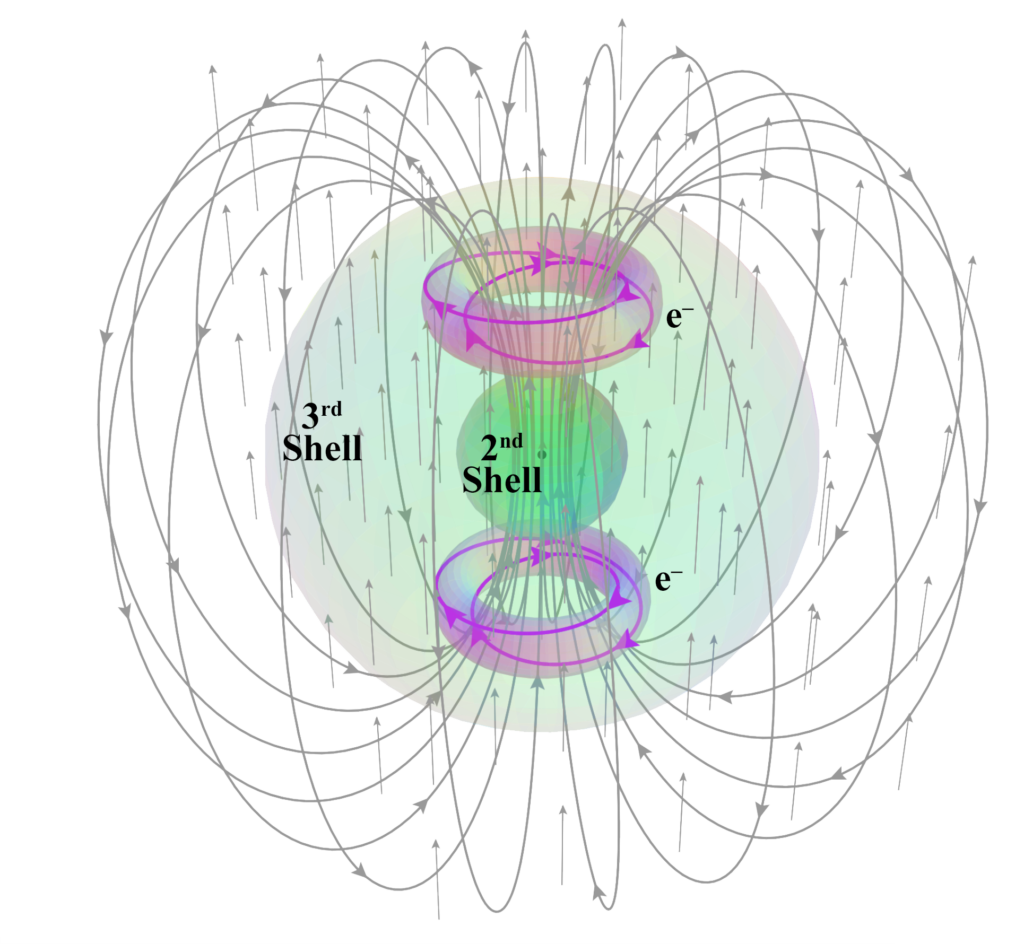
ABSTRACT:
This paper explores the manner in which electron hybrid orbital geometry may facilitate important electron interactions within metal atoms — interactions that may account for the trend in magnetic susceptibility strength across the transition metals in the periodic table. These pd-hybridized orbital structures are considered in detail, along with the field and spin interactions that may collectively contribute to the strength of an atom’s magnetic signature, relative to an external magnetic field. Specifically, various spin-related interactions, called spin bonding, are discussed, with respect to their influence over the magnetic field energy of a system of unpaired electrons, and thus, over properties such as paramagnetism, diamagnetism, and antiferromagnetism.
Keywords:
paramagnetism, diamagnetism, antiferromagnetism, hybridization, relativistic quantum mechanics, magnetic susceptibility, chromium, transition metals
![]() LINK to this abstract
LINK to this abstract
Peer review references:
Pending…
pd-Hybridization And The Electron Geometry Of Fluorine, Neon, And Iron
Arnie BENN, John G. WILLIAMSON
Quicycle Journal (2024)
Peer Review Level: 0
First posted: 07/10/24
QJ0029

ABSTRACT:
In this paper, the hybridization of atomic orbitals is considered through the lens of an extended relativistic quantum mechanics that we call ‘sub-quantum mechanics.’ Building upon earlier work, it is proposed that, in addition to the electrostatic driving force, the mechanisms behind electron pair formation, Pauli Exclusion, and Hund’s Second Rule are strongly influenced by the ways in which the components of electron spin affect composite atomic orbital states. These states can be either bosonic, as in the case of the di-electron and the proposed full shell configurations of neon and argon, or fermionic, as in the case of a hybridized boron atom. In addition, it is proposed that the repulsive interactions between di-electron and unpaired electron orbitals can cause the latter to become extended radially outward from an atomic valence shell. In this paper, the consequences of such a topological shift will be considered in the cases of fluorine and iron. The concept of hybridization between p– and d-orbitals, which first arises in the case of the transition metals, is also introduced. These pd-hybridized electron geometries may, in turn, help us to account for various elemental magnetic properties and periodic trends. Further, the specific electron geometry proposed for the iron atom may help to explain the nature and mechanism behind ferromagnetism, as well as how this mechanism might relate to both the above-mentioned orbital extension and fluorine’s very high reactivity.
Keywords:
orbital, hybridization, spherical harmonic resonance, relativistic quantum mechanics, quantum chemistry, boron, scandium, iron, fluorine, neon, argon, ferromagnetism
![]() LINK to this abstract
LINK to this abstract
Peer review references:
Pending…
Spherical Harmony: A Journey of Geometric Discovery
Gary DOSKAS
Quicycle Journal (2011)
Peer Review Level: 1
First posted: 02/4/24
QJ0028

ABSTRACT:
A geometric investigation of the harmonic relationships between circles, cones, and spheres.
Keywords:
Spherical harmonics, geometry
![]() LINK to this abstract
LINK to this abstract
Peer review reference:
AUDIO: Recorded conversations between John Williamson and Gary Doskas (2021)
Alternative Path to Solve Einstein’s Field Equations
Vivian N.E. ROBINSON
Quicycle Journal (2023)
Peer Review Level: 2
First posted: 10/27/23
QJ0027

ABSTRACT:
A solution to Einstein’s gravity field equations is derived directly from his 1916 paper, although it utilizes the conversion from Cartesian to polar co-ordinates, citing Schwarzschild’s paper for its derivation.
Keywords:
Einstein, gravity, relativity, field equations, Schwarzschild
![]() QJ0027: Robinson, V.N.E., “Alternative Path To Solve Einstein’s Field Equations” (2023)
QJ0027: Robinson, V.N.E., “Alternative Path To Solve Einstein’s Field Equations” (2023)
![]() LINK to this abstract
LINK to this abstract
Related content:![]() Vivian Robinson: “Physical Explanation Of Einstein’s Gravity” (J. Phys. Commun. 2021)
Vivian Robinson: “Physical Explanation Of Einstein’s Gravity” (J. Phys. Commun. 2021)![]() Vivian Robinson: Visualizing Sub-Quantum Gravity followed by this Q&A
Vivian Robinson: Visualizing Sub-Quantum Gravity followed by this Q&A
The Photonic Topology Of Sub-Quantum Spin
Arnie BENN, John G. WILLIAMSON
Quicycle Journal (2022)
Peer Review Level: 2
First posted: 01/14/23
QJ0026

ABSTRACT:
This paper investigates the nature of quantum spin, an internal quantum property of the electron and other subatomic particles and antiparticles. The development of sub-quantum mechanics opened the door to a deeper understanding of the photonic substructure of subatomic particles, and in particular, allowing for the first time the a priori calculation of the electron’s charge and anomalous magnetic moment. This represents a significant advance in relativistic quantum mechanics and in our understanding of the substructure of subatomic particles. As a consequence, this theory allows us to investigate the specific components of the electron’s quantum spin, as well as the topological difference between its ‘spin-up’ and ‘spin-down’ states. (As will be clarified, spin up versus down is conceptually different to parallel versus antiparallel because they refer to different spin components.) It is proposed that the electron’s spin is composed of three components, here named intrinsic spin, toroidal spin, and tumble. It is further proposed that the nature of the spin-up or spin-down state is a direct consequence of the direction of polarisation of the circularly-polarised photon constituting the electron (or other particle). Consequently, when two equal-energy photons of the appropriate energy interact to generate a particle/antiparticle pair, one photon polarisation will yield a spin-up electron and a spin-down positron, and the other will yield a spin-down electron and spin-up positron. The nature of quantum spin can then be leveraged to gain insight into the physical reason behind the formation and stability of the di-electron boson (electron pair) as a counter-rotating, interwoven, diamagnetic photonic state, a consequence of two superimposed and opposite electron spin configurations, as well as the physical (energy-related) reason behind exclusion.
Keywords:
Quantum spin, electron, positron, circularly polarised photon, intrinsic spin
![]()
QJ0026: Benn, A., Williamson, J. G., “The Photonic Topology Of Sub-Quantum Spin” (2022)
![]() LINK to this abstract
LINK to this abstract
Related video content:![]() Arnie Benn: The Physics Of Sub-Quantum Spin followed by this Q&A
Arnie Benn: The Physics Of Sub-Quantum Spin followed by this Q&A
Quantum Spin Coherence In 4 Derived 3-Spaces
John G. WILLIAMSON, Arnie BENN, Michael RUDOLPH
Quicycle Journal (2022)
Peer Review Level: 2
First posted: 09/30/22
QJ0025
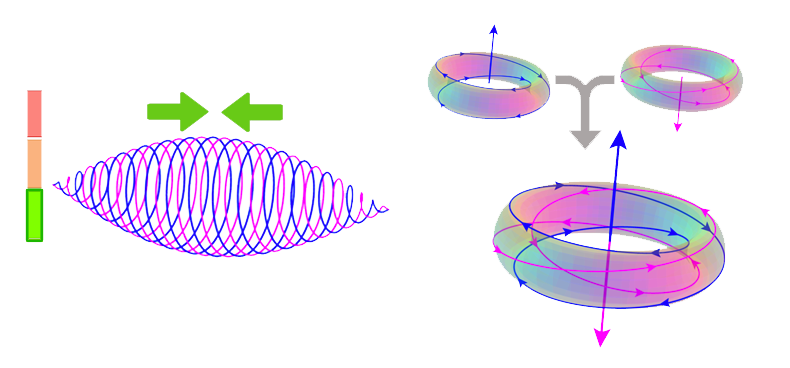
ABSTRACT:
A new theory is proposed — a development of relativistic quantum mechanics and electromagnetism — that allows for new insights into the modeling of electrons in atomic and molecular orbitals. Central to this approach is the mathematical treatment of each aspect of a system’s root-energy flow in its appropriate space-time components, as well as the fact that the internal wave nature of energy and matter results in quantum systems with a coherent, resonant, harmonic nature. It is this wave nature that lies at the root of quantisation itself. This paper introduces an approach that is designed to enable the modeling of a quantum system in a more detailed and complete way. It is proposed that derivatives in space-time lead to four 3-dimensional ‘dynamical spaces.’ This proves significant because these derivative spaces describe physical observables such as spin, electric field, and magnetic field. These have different properties, and this approach allows each to be considered, either separately or together, and in a fully relativistic fashion. The four 3-component derivative spaces are: energy (or frequency) space, electric field space, magnetic field space, and spin (or angular momentum) space. At the root of each of these are the properties of the one underlying 4-dimensional space-time. In particular, emerging from this new theory is a new way to model quantum spin and its contributions to energy, harmonic stability, and quantisation. This approach allows a clearer insight into the nature of both electron exclusion and electron pairing.
Keywords:
quantum spin, harmonic resonance, field cancellation, relativistic quantum mechanics, quantum chemistry
![]() LINK to this abstract
LINK to this abstract
Related video content:![]() John Williamson: Real Relativistic Quantum Mechanics
John Williamson: Real Relativistic Quantum Mechanics![]() John Williamson: Absolute Relativity Theory — A Proposed Solution To Hilbert’s 6th followed by this Q&A
John Williamson: Absolute Relativity Theory — A Proposed Solution To Hilbert’s 6th followed by this Q&A
Moving Clocks And Special Relativity Rest Reference Frames
Vivian N. E. ROBINSON
Quicycle Journal (2020)
Peer Review Level: 1
First posted: 07/23/20
QJ0022
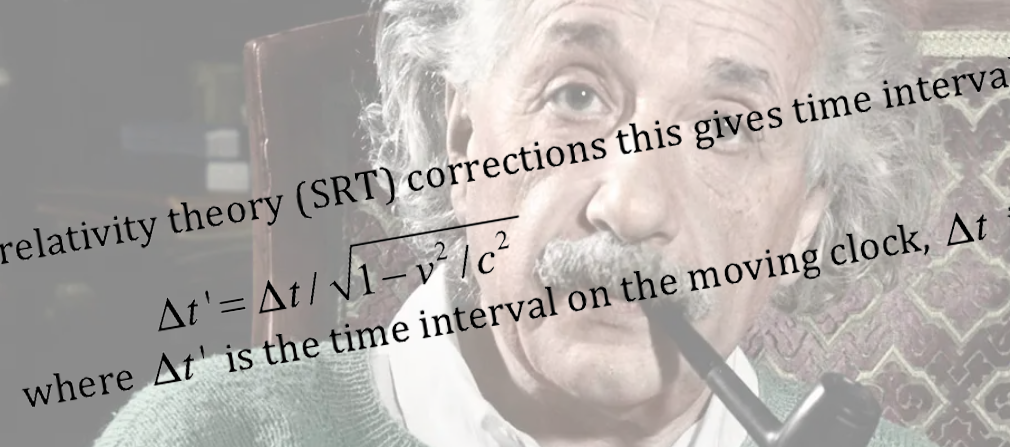
ABSTRACT:
Einstein’s special relativity theory predicts that time will go slower on moving clocks than stationary clocks. Without an absolute rest reference frame, how do we know which clock is moving and which is stationary? Although there is no absolute rest reference frame there are some practical rest reference frames. When the appropriate rest reference frame is chosen, clocks moving with respect to that rest reference pass time slower than those at rest in that reference frame.
Below, the second version was released following a video peer review session, viewable HERE .
Keywords:
Relativity, Special Relativity, Special Relativity corrections, General Relativity, inertial reference frame
![]() LINK to this abstract
LINK to this abstract
Related video content:![]() PEER REVIEW: Vivian Robinson & John Williamson: ‘Moving Clocks & Special Relativity Rest Reference Frames’
PEER REVIEW: Vivian Robinson & John Williamson: ‘Moving Clocks & Special Relativity Rest Reference Frames’
Perspective, Images, And Quantum Mechanics As A Relativistic Effect
Garnet N. ORD
Quicycle Journal (2020)
Peer Review Level: 2
First posted: 06/25/20
QJ0020

ABSTRACT:
Much of human cognition is devoted to image analysis. From infancy we learn to process the two dimensional images we receive on our retinas, decoding what we believe to be a representation of a world of objects located in a three dimensional space, viewed from a particular perspective. The consistency of that decoding is very strong: ‘seeing is believing.’ However, it is not infallible, and visual clues can give rise to mistaken perspectives. There is an analog of mistaken perspective in a ‘received view’ on the relation between quantum mechanics and special relativity. We explore a counter-argument, that quantum mechanics is in fact a relativistic effect, primarily through the use of images.
Keywords:
special relativity, light cone, quantum mechanics, perspective, Twins Paradox
![]() LINK to this abstract
LINK to this abstract
Related video content:![]() Garnet Ord: Images, Perspective, Quantum Mechanics, and Relativity followed by this Q&A
Garnet Ord: Images, Perspective, Quantum Mechanics, and Relativity followed by this Q&A
Inversion And General Invariance In Spacetime
Martin B. VAN DER MARK, John G. WILLIAMSON
Quicycle Journal (2016)
Peer Review Level: 2
First posted: 06/25/20
QJ0019

ABSTRACT:
A general formula for division in a relativistic Clifford-Dirac algebra is derived. Where division is undefined turns out, in many cases, to correspond to areas of physical interest, such as the light cone, invariant quantities in electromagnetism, and the basis set of quantities in the Dirac equation. Apart from such areas, where there has already been significant development in science, new sets of inter-related quantities, involving the spin and the total energy for example, are suggested as possibilities for further investigation and development.
Keywords:
non-division algebra, invariants, inverses, scaling, Dirac algebra, Clifford algebra, geometric algebra, special relativity, generalized covariance, rest mass, light cone, diamond conjugate
![]() LINK to this abstract
LINK to this abstract
Related video content:![]() John Williamson: Quantum Coherence & Quantum Collapse followed by this Q&A
John Williamson: Quantum Coherence & Quantum Collapse followed by this Q&A
2. Papers Published Elsewhere

The following articles represent a small selection of those published by Quicycle members in other peer-reviewed journals. (They would therefore all have a ‘Quicycle peer review ranking’ of level 3.)
AUTHORS LISTED:
QJ0024: Martin B. VAN DER MARK, John G. WILLIAMSON (2021)
QJ0023: Vivian N. E. ROBINSON (2021)
QJ0018: John G. WILLIAMSON (2019)
QJ0017: Martin B. VAN DER MARK (2019)
QJ0016: Martin B. VAN DER MARK (2015)
QJ0015: John G. WILLIAMSON (2015)
QJ0014: John G. WILLIAMSON, S. J. LEARY (2015)
QJ0013: W. F. HAGEN (2015)
QJ0012: Martin B. VAN DER MARK (2015)
QJ0011: John G. WILLIAMSON (2014)
QJ0010: John G. WILLIAMSON (2012)
QJ0009: P. H. BUTLER, N. G. GRESNIGT, Martin B. VAN DER MARK, P. F. RENAUD (2012)
QJ0008b: S.J. LEARY (2007)
QJ0008: Martin B. VAN DER MARK, G. W. ‘t HOOFT (2000)
QJ0007: John G. WILLIAMSON, Martin B. VAN DER MARK (1997)
QJ0006b: John G. WILLIAMSON, C. E. TIMMERING (1990)
QJ0006c: H. VAN HOUTEN, C. W. J. BEENAKKER, J G WILLIAMSON, et.al. (1989)
QJ0006a: B.J. VAN WEES, John G. WILLIAMSON, et.al. (1988)
Relativistic Inversion, Invariance And Inter-Action
Martin B. VAN DER MARK, John G. WILLIAMSON
Symmetry (2021)
Peer Review Level: 3
QJ0024

ABSTRACT:
A general formula for inversion in a relativistic Clifford-Dirac algebra has been derived. Identifying the base elements of the algebra as those of space and time, the first order differential equations over all quantities proves to encompass the Maxwell equations, and leads to a natural extension incorporating rest mass and spin. Despite the fact that this algebra is not a division algebra it seems to parallel reality well: where division is undefined turns out to correspond to physical limits, such as that of the light cone. The divisor corresponds to invariants of dynamical significance, such as the invariant interval, the general invariant quantities in electromagnetism, and the basis set of quantities in the Dirac equation. The study suggests other Lorentz invariants that may prove of interest, including one relating the spin and total energy. It is speculated that the apparent 3-dimensionality of nature arises from a beautiful symmetry between the three-vector algebra and each of four sets of three derived spaces in the full 4-dimensional algebra. It is conjectured that elements of inversion may play a role in the interaction of fields and matter.
Keywords: invariants ; inversion; division; non-division algebra ; Dirac algebra ; Clifford algebra ; geometric algebra ; special relativity, photon interaction
![]() LINK to this abstract
LINK to this abstract![]() LINK to the article on Symmetry
LINK to the article on Symmetry
Related video content:![]() John Williamson: Quantum Coherence & Quantum Collapse followed by this Q&A
John Williamson: Quantum Coherence & Quantum Collapse followed by this Q&A
Physical Explanation Of Einstein’s Gravity
Vivian N E. ROBINSON
J. Phys. Commun. (2021)
Peer Review Level: 3
QJ0023

ABSTRACT:
Einstein’s gravitational field equations from his general theory of relativity have formed the foundations of gravitational studies since their publication. His work is widely acknowledged as an example of a theoretical study that made a great contribution to our understanding of gravity. Einstein’s mathematical approach has made the topic complex and open to misinterpretation. This study evaluates the physics upon which his mathematics operates. It shows that mass distorts space–time by the redshift of photons. It derives two alternative metrics to the Schwarzschild metric. One was derived directly from Einstein’s early work on gravity. The other was derived from Einstein’s field equations by removing the approximations introduced in the Schwarzschild metric derivation. Both match observation better than the Schwarzschild metric and show why Einstein did not believe in black holes. The metric derived directly from Einstein’s early gravitational study, predicts the torus shape shown in the Event Horizon Telescope collaboration image. In showing the physics involved, this study suggests it is easier to understand the complexities of his work.
![]() LINK to this abstract
LINK to this abstract![]() LINK to the article on J. Phys. Commun.
LINK to the article on J. Phys. Commun.
Related video content:![]() Vivian Robinson: Visualizing Sub-Quantum Gravity followed by this Q&A
Vivian Robinson: Visualizing Sub-Quantum Gravity followed by this Q&A
A New Linear Theory Of Light And Matter
John G. WILLIAMSON
J. Phys. (2019)
Peer Review Level: 3
QJ0018

ABSTRACT:
A new theory is proposed with similar form and mechanics to the Dirac equation, but where the rest-mass is introduced in a more fundamental way. The new theory proves to encompass and extend classical electromagnetism, and reduce to it exactly in the field only case. A sharpening of the principle of relativity allows fully relativistic field-only solutions, which take on some of the properties more usually associated with quantised states. The extended theory has four new solutions which exhibit a non-zero electric field divergence and a double-covering symmetry. These are necessarily charged, essentially fermionic states, two with positive and two with negative charge, differing by an inner spin symmetry. The new configurations are identified with the spin “up” and spin “down” electron and positron.
![]() LINK to this abstract
LINK to this abstract![]() LINK to the article on J. Phys.
LINK to the article on J. Phys.
Related video content:![]() John Williamson: Unifying the Electron’s Particle & Wave Natures
John Williamson: Unifying the Electron’s Particle & Wave Natures![]() John Williamson: Complexity From Simplicity, Part 1
John Williamson: Complexity From Simplicity, Part 1![]() John Williamson: Complexity From Simplicity, Part 2
John Williamson: Complexity From Simplicity, Part 2
Quantum Particle, Light Clock Or Heavy Beat Box?
Martin B. VAN DER MARK
J. Phys. (2019)
Peer Review Level: 3
QJ0017
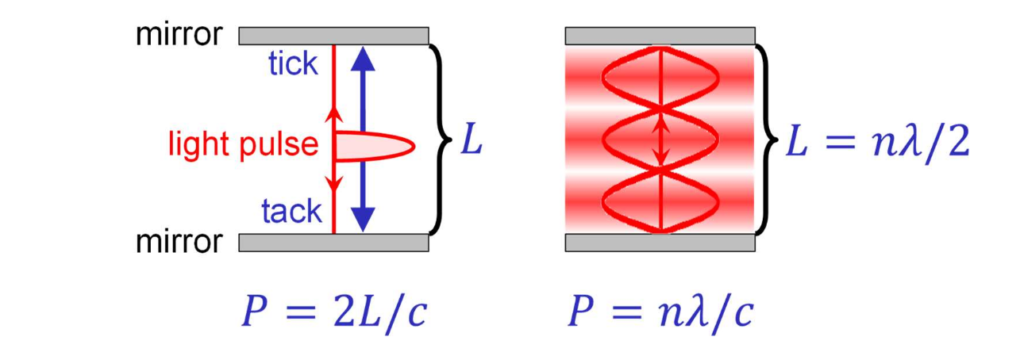
ABSTRACT:
A standing wave of light inside a cavity, while observed from a moving frame, is seen to have a spatial beat of precisely the same nature as that of the de Broglie wave of a quantum particle. The structural forces that hold together the cavity against the internal radiation pressure are compared to the so-called Poincaré stresses inside an elementary particle, as are required for the particle’s stability. This seems to work best if the cavity is non-rigid and hence is itself oscillating, coupled to the radiation inside.
![]() LINK to this abstract
LINK to this abstract![]() LINK to the article on J. Phys
LINK to the article on J. Phys
Related video content:![]() Martin van der Mark: Quantum Particle, Light Clock or Heavy Beat Box?
Martin van der Mark: Quantum Particle, Light Clock or Heavy Beat Box? ![]() John Williamson: Quantum Particle, Light Clock or Heavy Beat Box? QA&D
John Williamson: Quantum Particle, Light Clock or Heavy Beat Box? QA&D
On The Nature Of “Stuff” And The Hierarchy Of Forces
Martin B. VAN DER MARK
SPIE Optics & Photonics (2015)
Peer Review Level: 3
QJ0016

ABSTRACT
From super clusters of galaxies down to the quarks in the proton, at all length scales the structure of matter is the result of a balance of forces. In this paper it is argued that with decreasing size there must necessarily be an increase of the fraction of kinetic and binding energy with respect to the total energy. Smaller sizes require stronger forces which represent more of the energy available. The smallest possible size of granularity is found to be where the internal kinetic energy and total energy become comparable, which occurs at the size of the proton. We infer that the proton is the smallest stable particle, being a light speed circulation of energy.
Keywords: primordial stuff, hierarchy of forces, rest mass, energy balance, proton structure, light speed knot of energy.
![]() LINK to this abstract
LINK to this abstract![]() LINK to the article on SPIE Optics & Photonics
LINK to the article on SPIE Optics & Photonics
On The Nature Of The Photon And The Electron
John G. WILLIAMSON
SPIE Optics & Photonics (2015)
Peer Review Level: 3
QJ0015

ABSTRACT:
A new theory, describing both light and material particles, is proposed. The experimentally-observed nature of space and time are brought into the theory at the most fundamental level. An equation encompassing the usual free-space Maxwell equations but similar in form to the Dirac equation is proposed. This equation has new kinds of solutions. Propagating, pure-field solutions may have any energy, but the energy transferred must be proportional to the frequency. These are identified with the physical photon. Solutions with a rest-mass term allow any incoming propagating field to merge into re-circulating vortex-like solutions. The minimum energy configuration “rectifies” the oscillating electric field of light into a uni-directional, radial (inward or outward directed) configuration. The resulting apparent external charge may be readily estimated and is found to be of the order of the elementary charge. The spin may, likewise, be calculated, and is found to be half integral, exhibiting a double-covering internal symmetry. Charge is then not a fundamental quantity in the theory – but is a result of the way field folds from a rest-massless bosonic to a rest-massive fermionic configuration. The simplest such charged, fermionic particles are identified with the electron and positron.
Keywords: Electromagnetic electron positron photon.
![]() LINK to this abstract
LINK to this abstract![]() LINK to the article on SPIE Optics & Photonics
LINK to the article on SPIE Optics & Photonics
Absolute Relativity In Classical Electromagnetism: The Quantisation Of Light
John G. WILLIAMSON, S. J. LEARY
SPIE Optics & Photonics (2015)
Peer Review Level: 3
QJ0014

ABSTRACT:
A rigorous introduction of the underlying nature of space and time forces qualitatively new kinds of solutions in the classical theory of electromagnetism. A class of relativistic wave-functions are derived which are solutions to the first-order, free-space Maxwell equations. These describe all photons from radio to gamma waves and are governed by a single parameter: the exchange frequency. Though the theory remains that of classical, continuous electromagnetism, allowed traveling-wave solutions are quantised in that they come in “lumps” and their characteristic energy is proportional to frequency.
Keywords: light quantisation.
![]() LINK to this abstract
LINK to this abstract![]() LINK to the article on SPIE Optics & Photonics
LINK to the article on SPIE Optics & Photonics
Matter In The Form Of Toroidal Electromagnetic Vortices
W. F. HAGEN
SPIE Optical Eng. & Appl. (2015)
Peer Review Level: 3
QJ0013
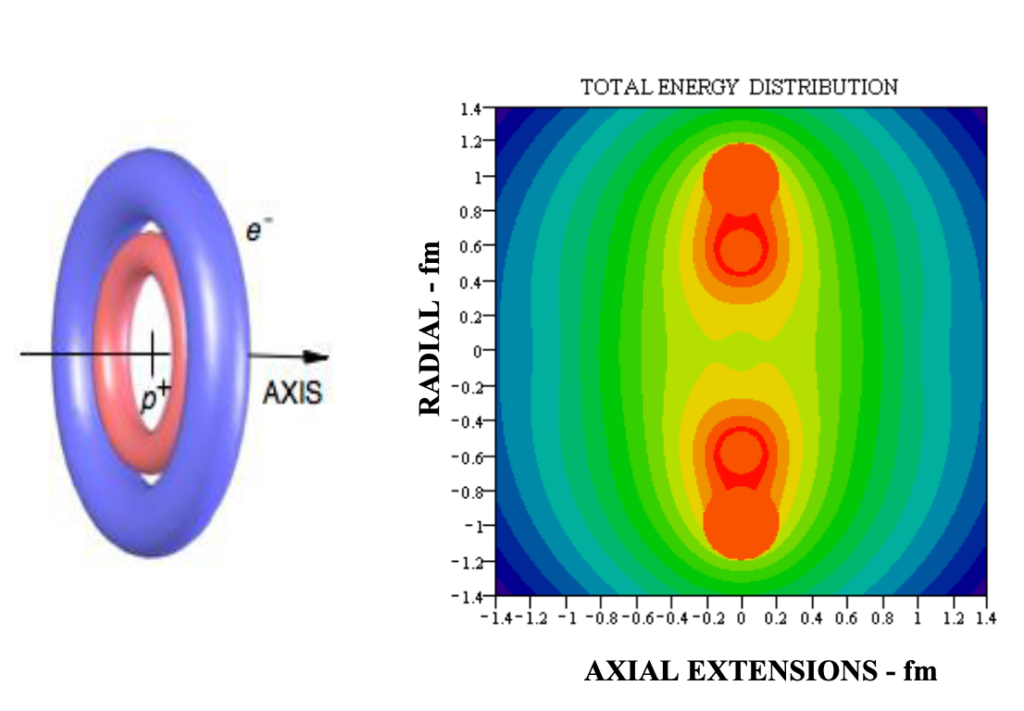
ABSTRACT:
The creation of charged elementary particles from neutral photons is explained as a conversion process of electromagnetic (EM) energy from linear to circular motion at the speed of light into two localized, toroidal shaped vortices of trapped EM energy that resist change of motion, perceptible as particles with inertia and hence mass. The photon can be represented as a superposition of left and right circular polarized transverse electric fields of opposite polarity originating from a common zero potential axis, the optical axis of the photon. If these components are separated by interaction with a strong field (nucleon) they would curl up into two electromagnetic vortices (EMV) due to longitudinal magnetic field components forming toroids. These vortices are perceptible as opposite charged elementary particles. These spinning toroids generate extended oscillating fields that interact with stationary field oscillations. The velocity-dependent frequency differences cause beat signals equivalent to matter waves, leading to interference. The extended fields entangled with every particle explain wave particle duality issues. Spin and magnetic moment are the natural outcome of these gyrating particles. As the energy and hence mass of the electron increases with acceleration so does its size shrink proportional to its reduced wavelength. The artificial weak and strong nuclear forces can be easily explained as different manifestations of the intermediate EM forces. The unstable neutron consists of a proton surrounded by a contracted and captured electron. The associated radial EM forces represent the weak nuclear force. The deuteron consists of two axially separated protons held together by a centrally captured electron. The axial EM forces represent the strong nuclear force, providing stability for “neutrons” only within nucleons.The same principles were applied to determine the geometries of force-balanced nuclei. The alpha-particle emerges as a very compact symmetric cuboid that provides a unique building block to assemble the isotopic chart. Exotic neutron-4 appears viable which may explain dark matter. The recognition that all heavy particles, including the protons, are related to electrons via muons and pions explains the identity of all charges to within 10–36. Greater deviations would overpower gravitation. Gravitation can be traced to EM vacuum fluctuations generated by standing EM waves between interacting particles. On that basis, gravity can be correlated via microscopic quantities to the age of the universe of 13.5 billion years. All forces and particles and potentially dark matter and dark energy are different manifestations of EM energy.
Keywords: photon, pair-creation, electron, waves, electromagnetic vortices, matter, elementary particles, neutron, deuteron, gravitation.
![]() LINK to this abstract
LINK to this abstract![]() LINK to the article on SPIE Optical Eng. & Appl.
LINK to the article on SPIE Optical Eng. & Appl.
Quantum Mechanical Probability Current As Electromagnetic 4-Current From Topological EM Fields
Martin B. VAN DER MARK
SPIE Proceedings (2015)
Peer Review Level: 3
QJ0012

ABSTRACT:
Starting from a complex 4-potential A=αdβ we show that the 4-current density in electromagnetism and the probability current density in relativistic quantum mechanics are of identical form. With the Dirac-Clifford algebra Cl1,3 as mathematical basis, the given 4-potential allows topological solutions of the fields, quite similar to Bateman’s construction, but with a double field solution that was overlooked previously. A more general null-vector condition is found and wave-functions of charged and neutral particles appear as topological configurations of the electromagnetic fields.
Keywords: topological fields, electromagnetism, Clifford algebra, Dirac equation, 4-current, knots.
![]() LINK to this abstract
LINK to this abstract![]() LINK to the article on SPIE Proceedings
LINK to the article on SPIE Proceedings
A New Theory of Light And Matter
John G. WILLIAMSON
Journal of Physics: Conference Series (2014)
Peer Review Level: 3
QJ0011

ABSTRACT:
Within a new mathematical framework, an extension to the free-space Maxwell equations is pro-posed with four further linear coupled differential equations. Within the formalism, a sharpening of the principle of relativity leads to new solutions of the Maxwell equations corresponding to uncharged rest-massless propagating states identified with the photon. The simplest extension, including a rest-mass density, allows for a self-confinement of the resulting system. The resulting new solutions are necessarily charged and essentially fermionic. These are identified with the electron and positron.
Fermions From Bosons And The Origin Of The Exclusion Principle
John G. WILLIAMSON
Mendel (2012)
Peer Review Level: 3
QJ0010
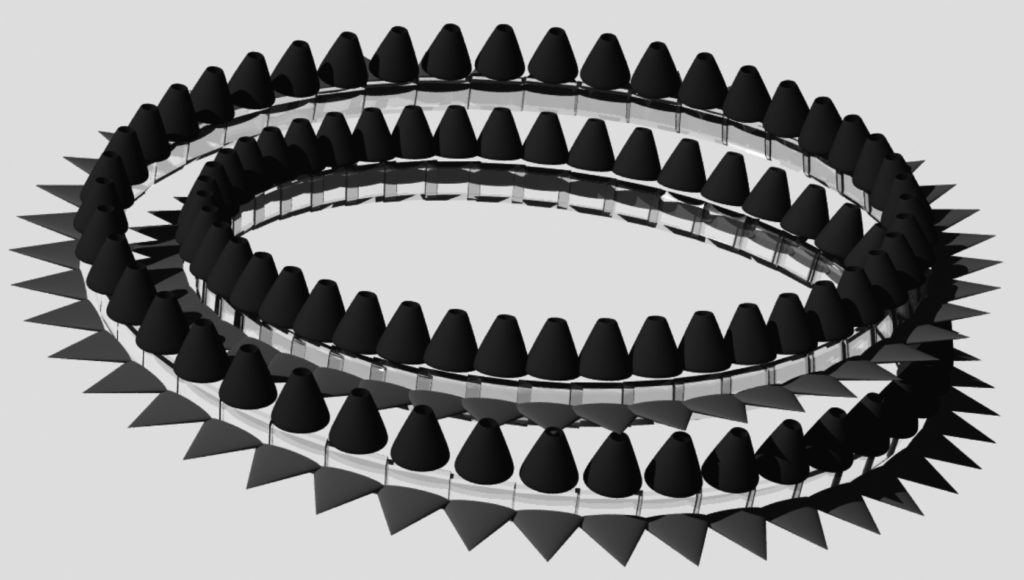
ABSTRACT:
Based on a model of the electron as a localised photon, a possible physical basis for the Pauli exclusion principle is proposed. It arises from the harmonic interference of the underlying fields. One possible theory leading to the self-confinement of electromagnetism is explored: an extension of the Maxwell equations.
Keywords: Electron, electromagnetism, exclusion principle, electromagnetic vortex.
A Fields Only Version Of Lorentz Force Law: Particles Replaced By Their Fields
P. H. BUTLER, N. G. GRESNIGT, Martin B. VAN DER MARK, P. F. RENAUD
arXiv (2012)
Peer Review Level: 3
QJ0009

ABSTRACT:
We show that the Lorentz force law, FL1=q1(E+v1×B) being the charge on particle 1interacting with the electromagnetic fields due to all other particles, can be written in a pure field form FL1=−∇1UEM. In this expression UEM is the total electromagnetic energy of the system of particle1 and all other particles. In deriving this result we review the old but not widely known results thatMaxwell’s equations follow uniquely from Special Relativity, and that the Lorentz force law follows from applying Hamilton’s variational principle to this result.For a two particle system, the standard view is that the electromagnetic force on particle 1 is the result of the charge of particle 1 interacting locally with the field of particle 2, and conversely. Both charges 1 and 2, and fields 1 and 2 are needed. In our approach, the fields of all particles contribute to the electromagnetic interaction everywhere, over all of space. The charges of the particles do not enter the theory except incidentally, via Gauss’s law. This has novel interpretational consequences. In particular, it allows a charged particle to be replaced by its electric and magnetic fields, much as a particle in quantum mechanics is replaced by its complex valued wave function.
Keywords: Lorentz force, Maxwell’s equations, Coulomb force. Hamilton’s principle, energy density.
Investigation Of Electromagnetism In A Real Dirac Algebra
S.J. LEARY
PhD thesis, University of Glasgow. (2007)
Peer Review Level: 3
QJ0008b

ABSTRACT:
The primary aim of this thesis is to investigate the utility of a Clifford-Dirac algebra Cℓ1,3 in describing relativistic electromagnetism. The motivation for choosing this algebra over other potential choices lies in the success of this algebra in describing relativistic quantum mechanics. The unit imaginary in is excluded in this algebra because a purely real description is sought and the supposition that the element is not required in order to formulate a covariant electromagnetic theory is to be tested. Square roots of the basis elements of the algebra are also investigated. An exhaustive computer search algorithm is developed to search for roots. This analysis provides general conditions for the formation of square roots where the basis elements have coefficients of equal magnitude. It is shown that such roots with two terms exist only for those elements which square to -1. No square roots are found with more than six terms. A simple algorithm is developed which enables the computational manipulation of Dirac-Clifford basis elements. A modified bubble-sort is used to perform multiplication of basis elements. This new algorithm is a reliable mechanism for performing multiplication. Maxwell’s equations are developed using the Clifford-Dirac algebra. The derivation of the complete set of field equations appear in a particularly compact and elegant form. A further motivation is to explore the potential for new kinds of wave functions within the algebra. The larger number of basis elements which square to -1 presents the opportunity to study wave equation using replacements for the complex imaginary. Finally, the aim of this thesis is to examine the behaviour of the electromagnetic field equations under relativistic transformations to determine whether or not the field equations and algebra form a relativistically covariant system..
Keywords: Clifford algebra, Maxwell’s equations, relativistic quantum mechanics.
![]() LINK to this abstract
LINK to this abstract![]() LINK to the article on Glasgow University
LINK to the article on Glasgow University
Light Is Heavy
Martin B. VAN DER MARK, G. W. ‘t HOOFT
arXiv (2000)
Peer Review Level: 3
QJ0008

ABSTRACT:
Einstein’s relativity theory appears to be very accurate, but at times equally puzzling.On the one hand, electromagnetic radiation must have zero rest mass in order to propagate at the speed of light, but on the other hand, since it definitely carries momentum and energy, it has non-zero inertial mass. Hence, by the principle of equivalence, it must have non-zero gravitational mass, and so, light must be heavy.In this paper, no new results will be derived, but a possibly surprising perspective on the above paradox is given.
Is The Electron A Photon With Toroidal Topology?
John G. WILLIAMSON, Martin B. VAN DER MARK
Annales de la Fondation Louis de Broglie (1997)
Peer Review Level: 3
QJ0007

ABSTRACT:
We study the properties of a simple semi-classical model of a photon confined in periodic boundary conditions of one wavelength. the topology of this object, together with the photon electric field, give rise to a charge of the order of 10-19 Coulombs and a half-integral spin, independent of its size. The ratio of the electromagnetic energy inside and outside the object leads to an anomalous spin g factor which is close to that of the electron. Although a finite size of order 10-12 meter arises in a natural way, the apparent size of the object will be much smaller iin energetic scattering events.
![]() LINK to this abstract
LINK to this abstract![]() LINK to the article on Fondation Louis de Broglie
LINK to the article on Fondation Louis de Broglie
Quantum Point Contact As A Local Probe Of The Electrostatic Potential Contours
John G. WILLIAMSON, C. E. TIMMERING, et.al.
Physical Review B (1990)
Peer Review Level: 3
QJ0006b

ABSTRACT:
Quantum point contacts, shifted laterally by +-50nm have been used to study the local electrostatic potential in the two-dimensional electron gas of a GaAs-AlxGa1-xAs heterostructure. The resistance of the quantised plateaux is observed to vary with this lateral position. In one device, an alternate suppression of the quantised resistance plateaux is observed, which we interpret as being due to an overlap of strong local potential fluctuations with the transverse profile of the wave function in the quantum point contact.
Coherent Electron Focusing With Quantum Point Contacts In A Two-Dimensional Electron Gas
H. van HOUTEN, C.W.J. Beenakker, John G. WILLIAMSON, et.al.
Physical Review B (1989)
Peer Review Level: 3
QJ0006c
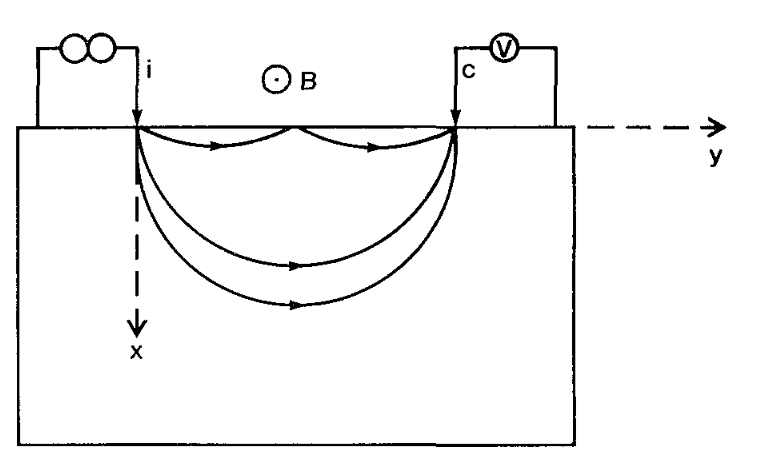
ABSTRACT:
Transverse electron focusing in a two-dimensional electron gas is investigated experimentally and theoretically for the first time. A split Schottky gate on top of a GaAs-AlxGa1-xAs heterostructure defines two point contacts of variable width, which are used as injector and collector of ballistic electrons. As evidenced by their quantized conductance, these are quantum point contacts with a width comparable to the Fermi wavelength. At low magnetic flelds, skipping orbits at the electron-gas boundary are directly observed, thereby establishing that boundary scattering is highly specular. Large additional oscillatory structure in the focusing spectra is observed at low temperatures and for small point-contact size. This new phenomenon is interpreted in terms of interference of coherently excited magnetic edge states in a two-dimensional electron gas. A theory for this effect is given, and the relation with non-local resistance measurements in quantum ballistic transport is discussed. It is pointed out, and experimentally demonstrated, that four-terminal transport measurements in the electron-focusing geometry constitute a determination of either a generalized longitudinal resistance or a Hall resistance. At high magnetic fields the electron-focusing peaks are suppressed, and a transition is observed to the quantum Hall regime. The anomalous quantum Hall effect in this geometry is discussed in light of a four-terminal resistance formula.
Quantized Conductance Of Point Contacts In A Two-Dimensional Electron Gas
B. J. VAN WEES, H. VAN HOUTEN, C. W. J. BEENAKKER, John G. WILLIAMSON, L. P. KOUWENHOVEN, D. VAN DER MAREL, & C. T. FOXON.
Phys. Rev. Lett. (1988)
Peer Review Level: 3
QJ0006a
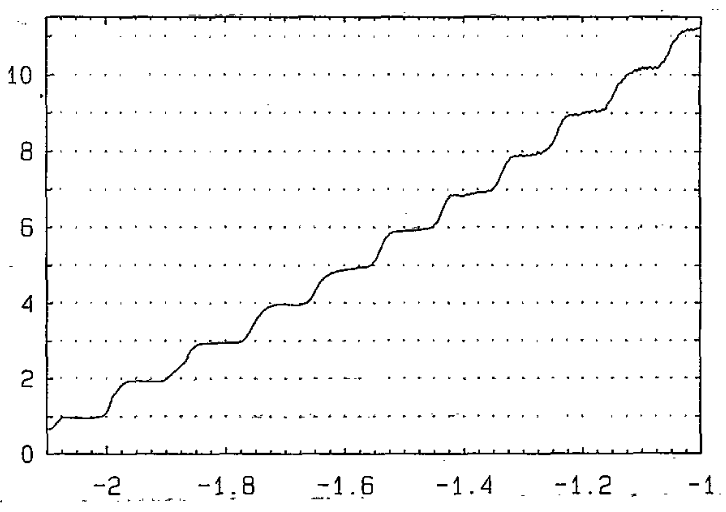
ABSTRACT:
Ballistic point contacts, defined in the two-dimensional electron gas of a GaAs-AlGaAs heterostructure, have been studied in zero magnetic field. The conductance changes in quantized steps of 𝑒²/πħ when the width, controlled by a gate on top of heterojunction, is varied. Up to sixteen steps are observed when the point contact is widened from 0 to 360nm. An explanation is proposed, which assumes quantized transverse momentum in the point-contact region.
![]() LINK to this abstract
LINK to this abstract![]() LINK to the article on Phys. Rev. Lett.
LINK to the article on Phys. Rev. Lett.
3. Classic Papers

We felt it was worthwhile to include the following scientific classics that you may not have had the opportunity to see yet. Enjoy.
AUTHORS LISTED:
QJ0005: Louis DE BROGLIE (1924)
QJ0004: Albert EINSTEIN (1920)
QJ0003: William K. CLIFFORD (1878)
Recherches Sur La Théorie Des Quanta
Louis DE BROGLIE
(1924)
QJ0005

FROM INTRODUCTION:
(Translation) History shows that there long has been dispute over two viewpoints on the nature of light: corpuscular and undulatory; perhaps however, these two are less at odds with each other than heretofore thought, which is a development that quantum theory is beginning to support. Based on an understanding of the relationship between frequency and energy, we proceed in this work from the assumption of existence of a certain periodic phenomenon of a yet to be determined character, which is to be attributed to each and every isolated energy parcel, and from the PLANCK-EINSTEIN notion of proper mass, to a new theory. In addition, Relativity Theory requires that uniform motion of a material particle be associated with propagation of a certain wave for which the phase velocity is greater than that of light (Chapter 1). For the purpose of generalising this result to nonuniform motion, we posit a proportionality between the momentum world vector of a particle and a propagation vector of a wave, for which the fourth component is its frequency. Application of FERMAT’s Principle for this wave then is identical to the principle of least action applied to a material particle. Rays of this wave are identical to trajectories of a particle (CHAPTER 2).
The application of these ideas to the periodic motion of an electron in a BOHR atom leads then, to the stability conditions of a BOHR orbit being identical to the resonance condition of the associated wave (Chapter 3). This can then be applied to mutually interaction electrons and protons of the hydrogen atoms (CHAPTER 4). The further application of these general ideas to EINSTEIN’s notion of light quanta leads to several very interesting conclusions. In spite of remaining difficulties, there is good reason to hope that this approach can lead further to a quantum and undulatory theory of Optics that can be the basis for a statistical understanding of a relationship between light-quanta waves and MAXWELL’s formulation of Electrodynamics (CHAPTER 5). In particular, study of scattering of X and γ-rays by amorphous materials, reveals just how advantageous such a reformulation of electrodynamics would be (Chapter 6). Finally, we see how introduction of phase waves into Statistical Mechanics justifies the concept of existence of light quanta in the theory of gases and establishes, given the laws of black body radiation, how energy parcellation between atoms of a gas and light quanta follows.
![]() LINK to this abstract
LINK to this abstract
Relativity: The Special And General Theory
Albert EINSTEIN
(1920)
QJ0004

FROM PREFACE:
The present book is intended, as far as possible, to give an exact insight into the theory of Relativity to those readers who, from a general scientific and philosophical point of view, are interested in the theory, but who are not conversant with the mathematical apparatus of theoretical physics. The work presumes a standard of education corresponding to that of a university matriculation examination, and, despite the shortness of the book, a fair amount of patience and force of will on the part of the reader. The author has spared himself no pains in his endeavour to present the main ideas in the simplest and most intelligible form, and on the whole, in the sequence and connection in which they originated.
![]() LINK to this abstract
LINK to this abstract
Applications Of Grassmann’s Extensive Algebra
William K. CLIFFORD
American Journal of Mathematics (1878)
QJ0003

FROM INTRODUCTION:
The present communication endeavors to determine the place of Quaternions and of what I have elsewhere called Biquaternions in the more extended system, thereby explaining the laws of those algebras in terms of simpler laws. It contains, next, a generalization of them, applicable to any number of dimensions; and a demonstration that the algebra thus obtained is always a compound of quaternion algebras which do not interfere with one another.
![]() LINK to this abstract
LINK to this abstract
